Looking to take your modeling techniques to new heights while adding a cool factor to your layout? How about the unique challenge of recreating a winter wonderland full of ice and, of course, snow. From railroading landmarks to end-to-end railroads, consider these 10 snowy places you could model. If you have another place in mind, let us know in the comments.
Aroostook Valley Railroad
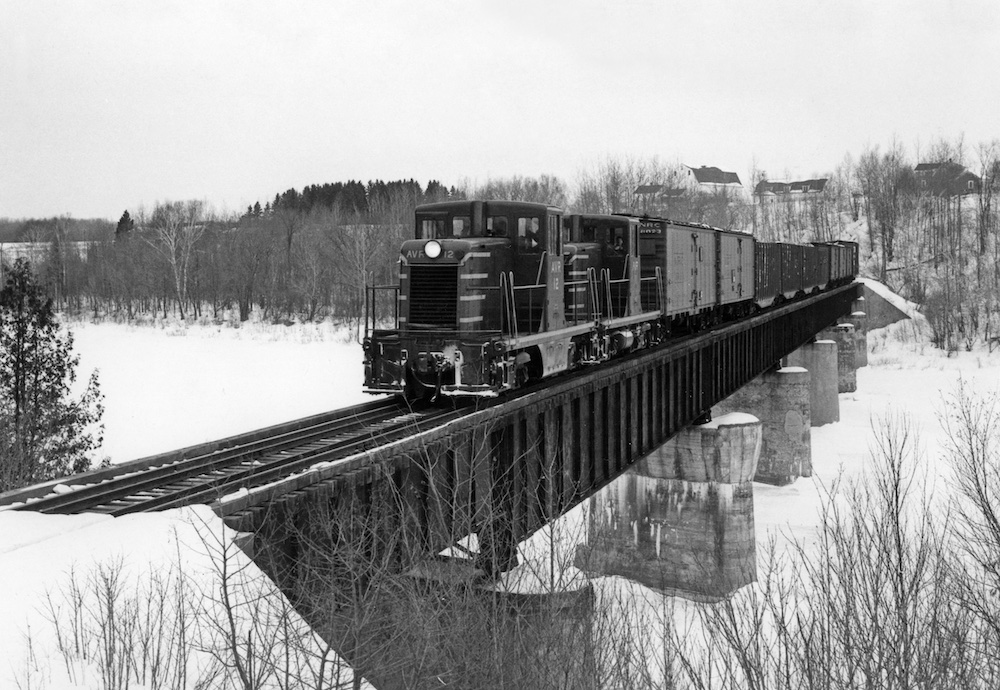
This short line once connected the small communities of northern Maine for the vital potato traffic, embracing the snowy climates that wreak havoc from late fall to early spring. For Geoffrey T. Smith, whose N-scale shelf layout showcases a compression of both the railroad and gentle terrain with relative simplicity, the Aroostook Valley offers plenty of wintry possibilities. These include industrial switching, delivery of road salt for the highway department, and the unique modeling challenge of kitbashing a prototypical double-ended snowplow from an old interurban boxcab. Read more about Smith’s Aroostook Valley Railroad in Model Railroader’s August 2013 issue.
Nickel Plate Road’s Buffalo Division
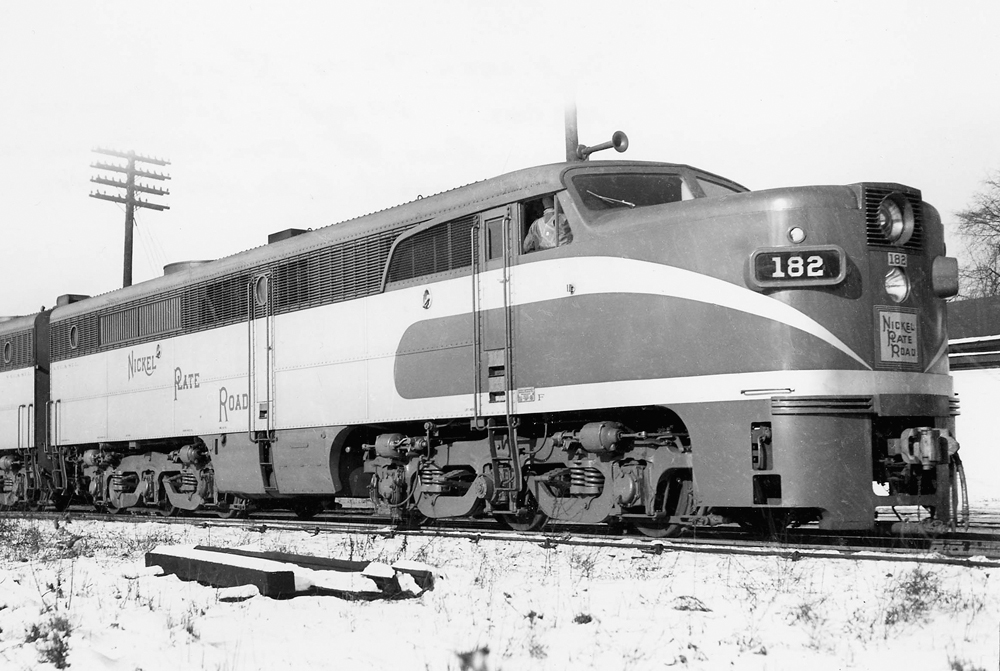
Looking to operate mainline, snow-kicking speeds during the transition era? Modeling the Buffalo Division of the Nickel Plate would be great. This section of the “High Speed Service” runs west out of Buffalo, N.Y., to Conneaut, Ohio. Along the way are the south shores of Lake Erie, bringing lake-effect snow in winter. The winter of 1950 offers a backdrop for those interested in the changeup from steam to diesel. Late steam is mainly represented by the “Super Power” 2-8-4 Berkshires hustling heavy freight. Early diesel is a mixture of Alco and EMD power, including the former’s PA1 “Bluebirds.”
Michigan’s Upper Peninsula
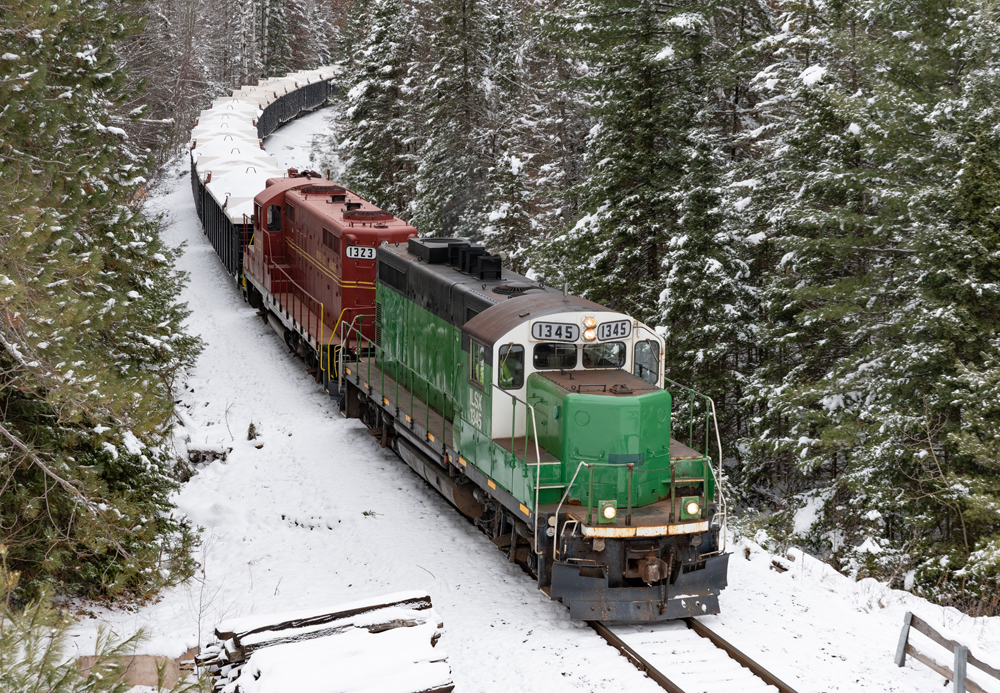
Traversing wooded terrain with limited population to reach valuable minerals, you would think this is railroading during the gold rush of the Western Frontier. This is instead Michigan’s Upper Peninsula, with vital ores still being hauled out today. Up north and surrounded by three great lakes, operations during the wintertime can be brutal. For those looking to model mine traffic in these conditions, you won’t go wrong with any specific location, railroad, or era to choose from within the area. Layout plans of the fictional Mineral Range & Lake Michigan RR by John Armstrong can serve as a great inspiration for those looking to freelance. Read more about Armstrong’s Mineral Range & Lake Michigan RR in Model Railroader’s March 2012 issue.
Chicago’s “Racetrack”
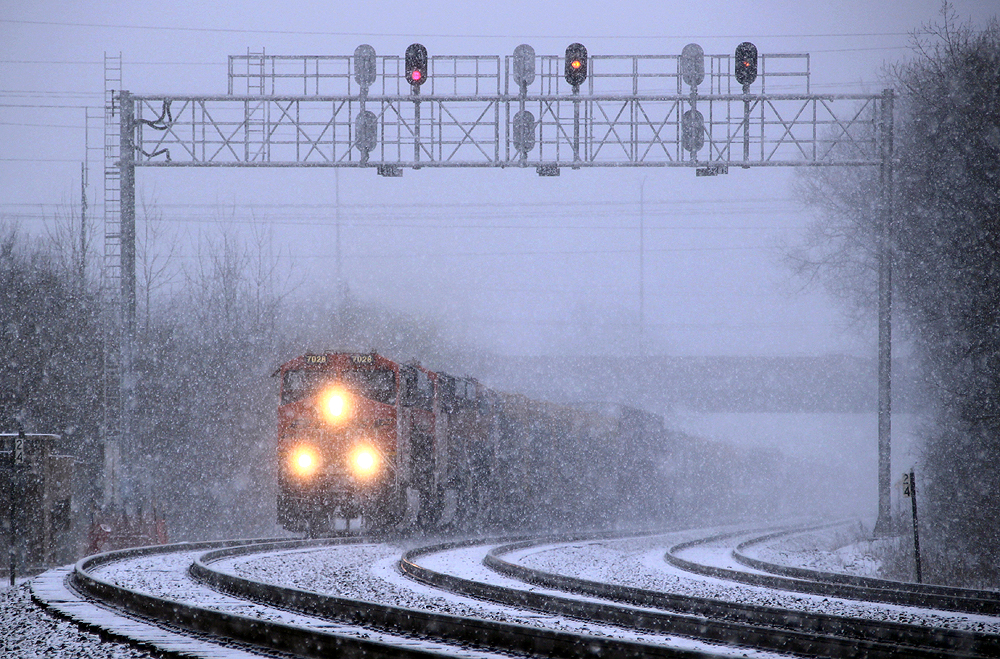
Today’s rail network in and around Chicago is a tangled web with the heart of the city right in the middle. Towering buildings on a metropolitan scale may not be picturesque for a winter setting compared to mountains and forests. But when snow hits the region, the drama sets in as railroads struggle to keep from grinding to a halt. BNSF Railway’s triple-track Chicago Subdivision, commonly called “The Racetrack,” hosts a healthy abundance of freight in addition to Amtrak and Metra passenger trains. Whether it’s a particular town or the entire route from Chicago Union Station to Aurora, Ill., modeling this subdivision sets the stage for a busy operation during an infamous Midwestern winter.
Central North Dakota
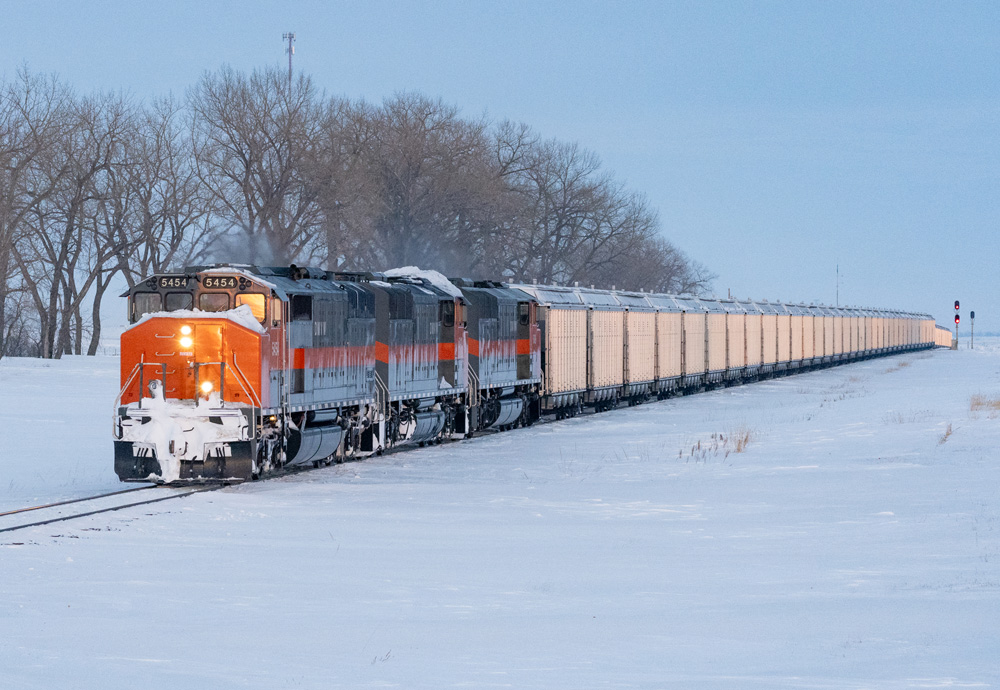
Blizzards packed with high winds and low temperatures across the Northern Prairies will have the vibes of traversing Antarctica. For those looking to re-create this setting for a layout, may we suggest central North Dakota, roamed by the modern Class I lines CPKC and BNSF, in addition to the short line Dakota, Missouri Valley & Western. No matter which railroad or location you choose in the area, modeling this mostly flat terrain – buried in ice and snow – can serve as an excellent challenge, especially for beginners who may not be ready to carve out a mountainous pass just yet. For those who are ready, though…
Marias Pass
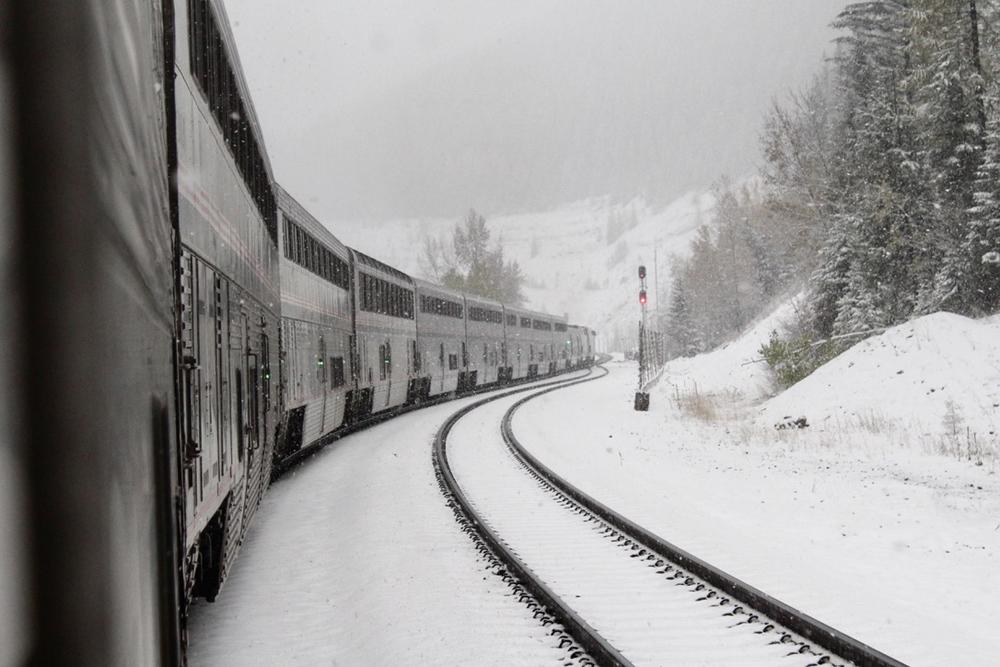
Despite a lower elevation through the Continental Divide at 5,213 feet, the notorious snowfalls of Marias Pass in northwest Montana has been and continues to be a threat to the BNSF Chicago-to-Seattle main line. There’s a reason this route has been referred to as “Avalanche Alley” by generations of railroaders since opening in 1892. Your mileage may vary in simulating these avalanches along what was part of the former Great Northern. However, if you’re ready to build a railway empire with snowcapped mountains on your layout, here’s some inspiration from the “Empire Builder” himself, James J. Hill.
Moffat Tunnel
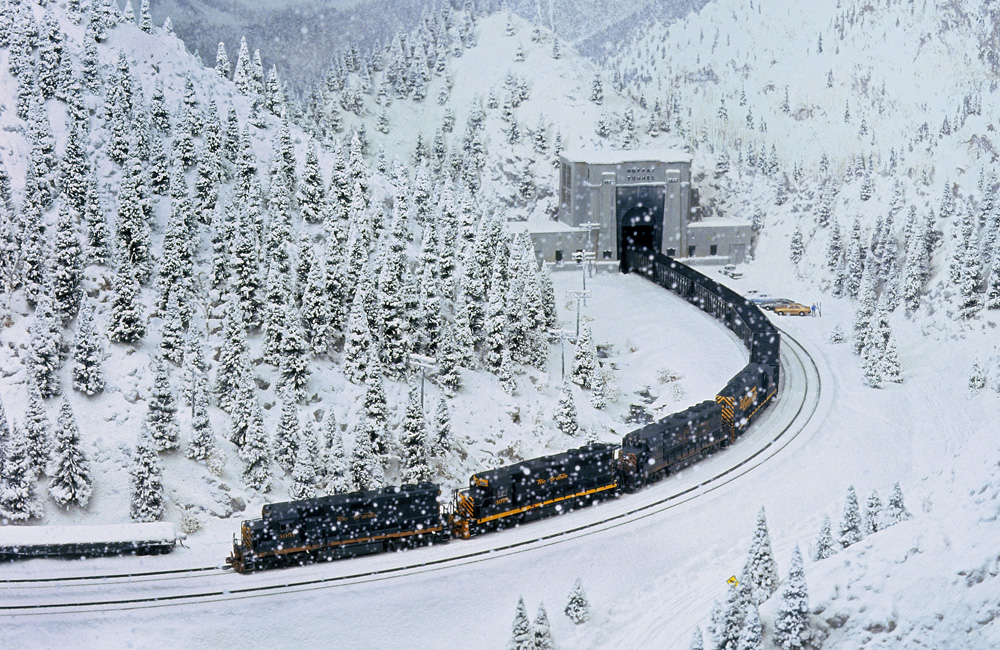
A centerpiece in the lore of the Denver, Rio Grande & Western is the 6.21-mile Moffat Tunnel, cutting through the divide at 9,239 feet in elevation of the Colorado Rockies. From the tunnel, eastbound will showcase the Front Range with its dramatic slopes heading down to Denver (as modeled in Mike Danneman’s N scale layout), while westbound makes a quick stop at the famous Winter Park ski resort, right by the portal, before heading deep into the canyons. Whether modeling either or both sides, this winter wonderland will have an operation of grueling grades and Mother Nature to contend with. Read more about Danneman’s Moffat Tunnel layout in Model Railroader’s December 2011 issue.
Colorado & Southern Railway
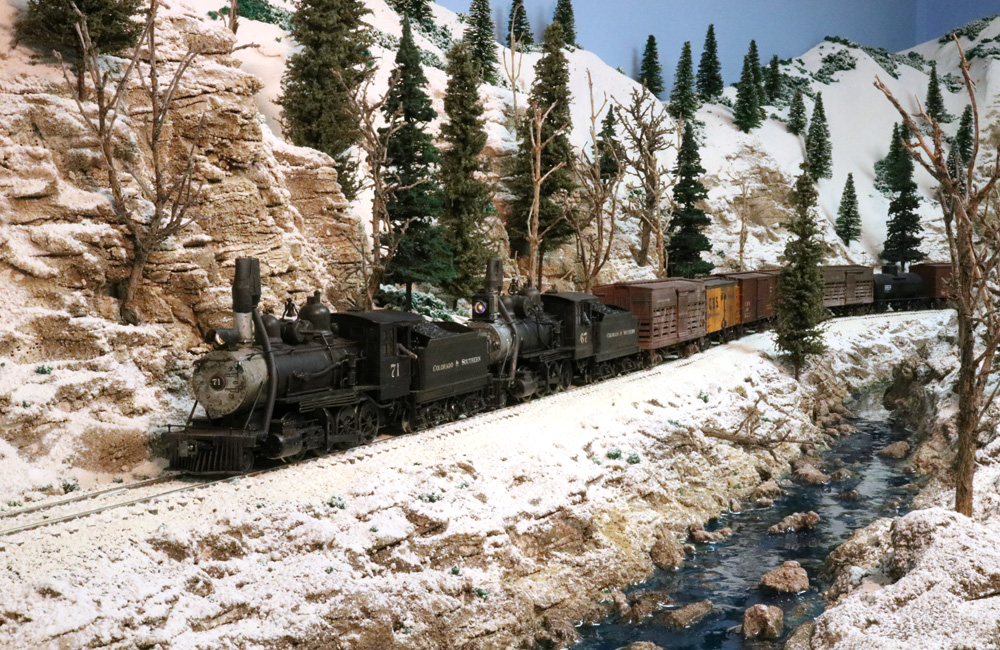
Rocky Mountain railroading in Colorado is usually synonymous with narrow gauge, with the Denver & Rio Grande Western particularly remembered fondly. The Colorado & Southern Railway was also no slouch, as proven by Doug Tagsold’s double-deck layout in 1:72 scale. The prototype operated multiple narrow gauge mining lines that snaked west out of Denver and into the heart of the mountains, where one could conceivably find snow on the ground more than six months out of the year. Despite very little of the infrastructure remaining today, photographs, documents, and the Georgetown-Silver Plum section operating as the Georgetown Loop Railroad are still preserved for those looking to replicate this fallen flag. Read more about Tagsold winterizing a section of his Colorado & Southern Clear Creek District in Model Railroader’s February 2021 issue.
Donner Pass
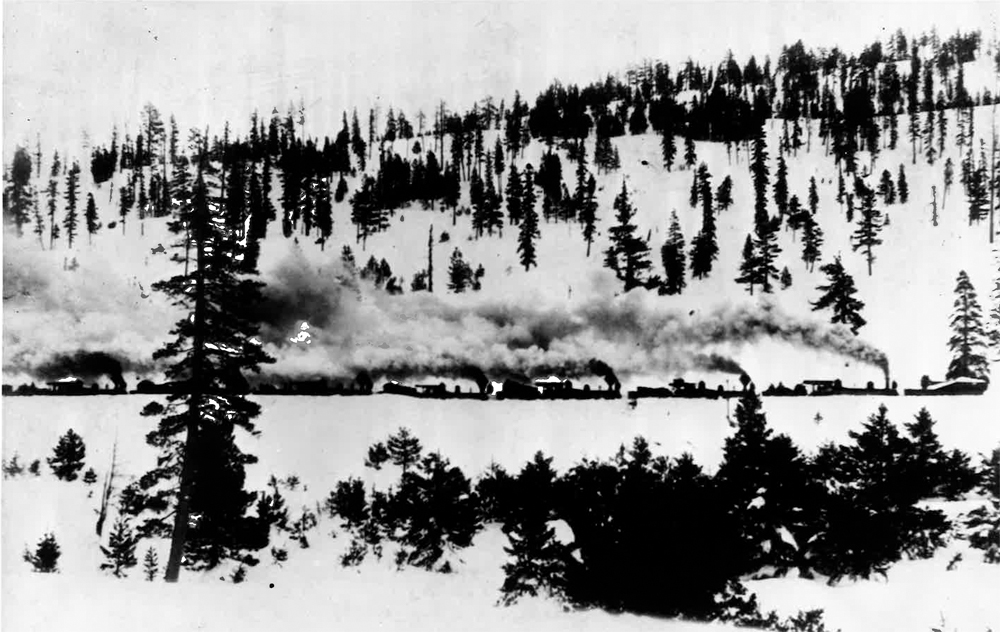
The lyric “California dreamin’ on such a winter’s day” usually doesn’t bode well to the nightmares of Sierra Nevada’s Donner Pass during that time of year. But the railroad history is as deep as the snow drifts. From the steam locomotives of the 19th-century Central Pacific to the diesel power of today’s Union Pacific, there are significant opportunities to model the pass with different locomotives and rolling stock available. One thing that remains the same in the last 150 years is the challenge of keeping this section of the first Transcontinental Railroad open through the winter’s snow.
Stevens Pass
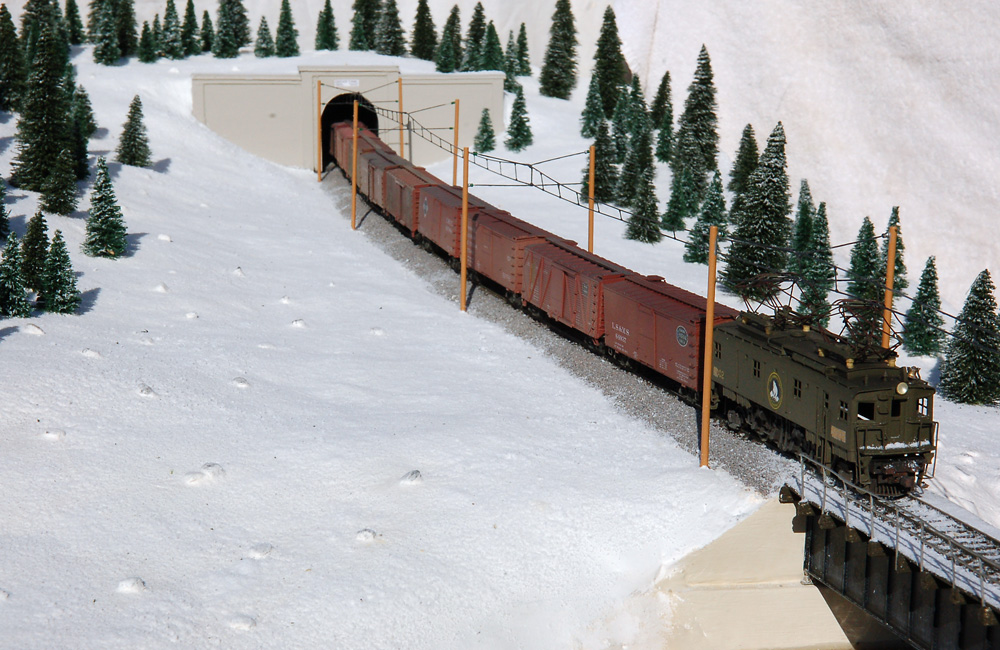
Returning to the former Great Northern main line pinpoints Stevens Pass of the Cascade Division. As the name implies, the route twists and turns through the namesake mountain range of Washington to reach the Pacific Northwest. Much like the places covered in the Rocky Mountains and Sierra Nevada, combating the cold, ice, and heavy snow is critical. The railroad has used snowsheds and two incarnations of the Cascade Tunnel (the second of which is still in service today). A wrinkle during the days of the Great Northern was electrification to a section both in and around the historic tunnels. For a snowy, mountainous layout with steam, diesel and electric locomotives at your controls, Stevens Pass during the late 1940s-early 1950s (as recreated by Lee Marsh in HO scale) could be just the ticket. Read more about Marsh’s Great Northern Cascade Division in Model Railroader’s June 2020 issue.









